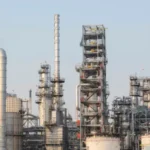How the Oil and Gas Industry Works: A Complete 2025 Guide

Oil and gas remain the backbone of global energy, powering vehicles, heating homes, driving industrial production and supplying essential feedstocks for plastics, fertilizers and pharmaceuticals. Despite the rapid growth of renewables, oil and gas still account for a significant percentage of the world’s primary energy needs in 2025.
The oil and gas industry represents a multi trillion dollar value in the world economy, underscoring its immense financial significance. The sector has a profound impact on the global economy and plays a central role in meeting worldwide energy consumption.
This guide breaks down how the oil and gas industry operates across its upstream, midstream and downstream segments and spotlights key players, technologies, market forces and environmental factors shaping its future within the broader energy industry.
From exploration and drilling to refining and distribution, each stage involves complex logistics and strategic decision making. We draw insights from trusted sources including the EIA, CFR, BP and the IMF and offer a clear, data backed look at how this vital sector continues to evolve in 2025.
The Global Scope and Strategic Importance of Oil and Gas
The oil and gas industry generates over $4.2 trillion in global revenue making it one of the most economically vital sectors in 2025. This immense dollar value underscores its significance within the broader energy industry. It powers transport, fuels manufacturing and supplies feedstocks for plastics, fertilizers and pharmaceuticals.
The strategic importance of oil and gas is reinforced by the influence of OPEC and top petroleum exporting countries and producers including the United States, Saudi Arabia, Russia, Canada and China. Emerging markets continue to drive demand especially across industrial and transport sectors.
More than half of global energy consumption is shaped by the policies of petroleum exporting countries, highlighting their impact on world energy dynamics. Price stability remains closely tied to OPEC’s production decisions with Brent crude forecast to trade between $60 and $70 per barrel.
The sector’s geopolitical weight and economic scale make oil central to global energy security and policy.
Quick Fact Box
- Global Revenue: $4 trillion+
- Top Producers: US, Saudi Arabia, Russia, Canada, China4
- 2025 Price Range: $60–$70/barrel
Geological Origins of Oil and Natural Gas
Oil and gas are formed from prehistoric organic matter, mainly marine microorganisms like algae and zooplankton, that settled in oxygen-poor environments and were buried under layers of sedimentary rock. Over millions of years, heat, pressure and bacterial action transformed this organic material into hydrocarbons.
These hydrocarbons serve as the raw materials for the entire energy industry, providing the foundational inputs for further processing and use. The process begins with the formation of kerogen which matures into crude oil and natural gas depending on temperature and depth.
These hydrocarbons, classified as fossil fuels, are a primary energy source for modern society. They migrate through porous reservoir rock and become trapped beneath impermeable cap rock layers, forming extractable reserves. Understanding this geological sequence is critical for upstream exploration helping geoscientists identify viable drilling zones and predict reservoir behavior.
Most source rocks are shale and the oil window typically lies between 2 to 4 kilometers deep where temperatures range from 60 to 120 degrees Celsius.
Diagram Suggestion A simple cross-sectional sketch showing:
- Organic matter burial
- Heat and pressure zones
- Migration pathways
- Reservoir and cap rock structure
The Oil and Gas Industry Value Chain
The oil and gas industry operates through three core segments: upstream, midstream and downstream. Each plays a distinct role in transforming raw hydrocarbons into usable energy and products. From exploration to distribution, this value chain involves high capital investment, advanced technology and strategic coordination across global markets.
Upstream: Exploration and Production (E&P)
Upstream activities focus on locating and extracting hydrocarbons. The exploration phase begins with geological mapping and seismic surveys – 2D, 3D and even 4D imaging alongside tools like gravimeters and magnetometers to identify subsurface formations. Once viable reserves are confirmed, drilling begins.
Operators use vertical and horizontal drilling methods, both onshore and offshore, often supported by hydraulic fracturing to unlock tight formations. Well completion involves casing, cementing, perforating and installing pump systems. Enhanced oil recovery (EOR) techniques such as gas injection or chemical flooding are used to maximize output.
As of 2025, US crude oil production averages 13.5 million barrels per day (bbl/d) while natural gas output reaches an average of 117.1 billion cubic feet per day (Bcf/d).
Common Terminologies:
- bbl: barrel
- MMbbl: million barrels
- Mmcf: million cubic feet
- MMBtu: million British thermal units
Sunita Hydrocolloids Inc. is an oil and gas service provider that supplies guar based gelling agents, crosslinkers and clay stabilizers essential for hydraulic fracturing and stimulation. These chemicals improve proppant transport, fluid stability and formation integrity.
Common Fracking Chemicals by Sunita Hydrocolloids Inc.
- Guar based gelling agents: Enhance viscosity for proppant placement
- Crosslinkers: Improve gel strength and thermal stability
- Clay stabilizers: Prevent formation damage and maintain permeability
Midstream: Transportation and Storage
Midstream operations ensure safe and efficient movement of oil and gas from production sites to refineries and markets. Pipelines are the primary mode, supported by marine tankers for crude and LNG and rail or trucks for regional transport. Storage infrastructure includes tank farms and salt dome caverns which help balance supply and demand.
The regulatory framework led by the Federal Energy Regulatory Commission (FERC) enforces pipeline safety and environmental compliance. Midstream is the critical link that prevents supply disruptions and maintains product flow across regions.
The industry’s challenges include aging infrastructure, leak detection and environmental risks. Emerging technologies such as IoT sensors and drones are improving pipeline monitoring and inspection accuracy. These innovations reduce downtime, enhance safety and support predictive maintenance strategies.
Midstream companies play a pivotal role in stabilizing energy logistics, especially as global demand and export volumes continue to grow.
Downstream: Refining and Distribution
Downstream activities convert crude oil and natural gas into finished products. Refining involves fractional distillation, catalytic cracking and reforming to produce gasoline, diesel, jet fuel, LPG, asphalt, lubricants and petrochemical feedstocks. These outputs serve retail gas stations, industrial buyers and export markets.
Refiners must meet strict regulations including sulfur content limits and cleaner fuel standards. Investment trends show rising petrochemical capacity, driven by plastics and packaging demand. Environmental mitigation includes carbon capture, wastewater treatment and flare gas recovery.
Digital twins and next generation catalysts are reshaping refinery operations enabling real time optimization and better yield forecasting. These technologies improve efficiency, reduce emissions and support compliance.
Industry Business Models and Key Players
The oil and gas industry operates through diverse business models shaped by scale, specialization and risk strategy. Integrated oil majors like ExxonMobil, Chevron, Shell and BP manage operations across the entire value chain from exploration to refining and marketing.
- Independent E&P firms focus solely on upstream activities leveraging agility and geological expertise to tap new reserves.
- Midstream operators such as Kinder Morgan and Enbridge handle transportation and storage ensuring steady product flow across regions.
- Downstream specialists concentrate on refining, petrochemical production, and retail distribution.
Service providers play a critical role in enabling operations. Companies like Schlumberger and Halliburton offer drilling and reservoir services while Sunita Hydrocolloids Inc. supplies guar based surfactants, crosslinkers and clay stabilizers essential for hydraulic fracturing and well stimulation.
Diversification across segments helps mitigate commodity price volatility while specialization allows firms to optimize performance and innovate within their niche. Together, these players form a tightly connected ecosystem driving global energy supply.
Industry Metrics and Terminology
Understanding oil and gas metrics is essential for investment, trading and operational decisions. A barrel (bbl) equals 42 US gallons and is the standard unit for crude oil. MMbbl and Mbbl refer to million and thousand barrels, respectively. For gas, Mmcf means million cubic feet while Bcf and Tcf represent billion and trillion cubic feet.
MMBtu measures energy content in gas trading. Reserves are classified by confidence levels: proved (90 percent), probable (50 percent) and possible (10 percent). As of 2023, global proved reserves stand at approximately 1.5 trillion barrels. These metrics often appear in financial filings, production reports and futures contracts shaping how stakeholders assess performance and forecast supply.
| Term | Meaning | Usage Example |
| Barrel (bbl) | 42 US gallons | Crude oil production volume |
| Mmcf | Million cubic feet of natural gas | Gas production |
| MMBtu | Million British thermal units (energy) | Gas futures trading |
| Proved Reserves | High-certainty recoverable oil | Company reserve disclosures |
Regulation and Environmental Context
In the United States, oil and gas governance is distributed across federal agencies. The Bureau of Land Management (BLM) manages land leasing for exploration, the Federal Energy Regulatory Commission (FERC) oversees pipeline infrastructure and the Environmental Protection Agency (EPA) enforces emissions controls. Key environmental laws include the Clean Air Act, Clean Water Act and Safe Drinking Water Act.
The industry faces persistent challenges such as greenhouse gas emissions, methane leaks and spill risks. With oil and gas operations responsible for considerable percent of global CO₂ emissions, companies are accelerating efforts to reduce their footprint. Investments in carbon capture and storage (CCS), renewable energy projects and methane monitoring technologies are reshaping operational standards.
EPA’s updated methane rules and BLM’s waste prevention regulations are pushing operators toward cleaner practices. These shifts reflect growing pressure from regulators, investors and communities to align energy production with environmental accountability and long term sustainability.
Technology and Innovation in 2025
The oil and gas industry in 2025 is driven by precision, automation and data intelligence. Exploration now relies on 4D seismic imaging, remote sensing and AI powered subsurface analysis to improve accuracy and reduce dry wells. Production benefits from automated rigs, AI reservoir modeling and real time drilling optimization.
In addition, the adoption of energy technology solutions such as carbon capture, hydrogen generation, and lithium extraction is accelerating as companies diversify into low-carbon and clean energy sectors.
Midstream operations use IoT sensors for leak detection and drones for infrastructure inspections. Downstream refineries deploy digital twins for process control, advanced catalysts for cleaner yields and blockchain to secure supply chains. Chemical innovation plays a key role in performance and sustainability.
Service companies are instrumental in deploying new technologies such as Sunita Hydrocolloids’ guar based surfactants and crosslinkers which enhance hydraulic fracturing fluid efficiency, improve proppant transport and reduce water usage. These technologies help lower operational costs and environmental impact.
As companies push toward net zero goals, digital tools and smart chemistry are reshaping how hydrocarbons are sourced, moved and refined. The result is a leaner, safer and more responsive energy sector.
Economic and Geopolitical Challenges
The oil and gas industry in 2025 faces a volatile mix of economic and geopolitical pressures. Price swings are influenced by OPEC+ production decisions, sanctions on Russia and Iran, and regional conflicts that disrupt supply chains. Infrastructure bottlenecks such as aging pipelines, limited refinery capacity and skilled labor shortages, add strain to operations.
Meanwhile, the energy transition is reshaping market dynamics with renewables gaining ground and fossil fuel investments facing tighter scrutiny. The global economy and financial markets also play a significant role as fluctuations in economic growth and investment conditions can directly impact oil prices, capital flows and industry stability.
Geopolitical risks remain high, especially in the Middle East and Eastern Europe where tensions and trade restrictions impact global flows. Sanctions have forced shifts in sourcing and logistics while strategic reserves and LNG diversification are helping buffer disruptions. Thus, investment strategies are evolving, with companies balancing fossil fuel commitments against growing renewable portfolios.
There is a growing emphasis on energy independence as nations seek to reduce reliance on foreign oil by diversifying their energy sources including renewables and domestic production. This trend is particularly notable in emerging economies where comprehensive energy strategies are being developed to integrate low carbon technologies and ensure long term energy security.
Despite uncertainty, capital continues to flow into both sectors reflecting a dual track approach to energy security and sustainability.
Environmental Challenges and the Energy Transition
The oil and gas industry faces mounting pressure to reduce its environmental footprint. Fossil fuel combustion accounts for a significant percent of global CO₂ emissions while methane leaks from production and transport add to climate risks. In response, companies are investing in carbon capture, hydrogen development, biofuels and verified offsets to meet evolving sustainability targets.
The industry is also focusing on reducing carbon emissions and carbon dioxide output from fossil fuels through technological innovation and operational restructuring. Renewable integration is gaining traction with the oil and gas sector contributing to the market notably. These efforts aim to balance continued fossil fuel reliance with long term decarbonization goals.
Solar and wind energy are increasingly recognized as key components of the energy transition, enhancing energy security and supporting the shift away from fossil fuels.
Innovations in surfactant chemistry such as those from Sunita Hydrocolloids are helping reduce water usage and improve fluid efficiency in hydraulic fracturing and supporting cleaner extraction practices. The energy transition is no longer a distant concept but a strategic pivot that is reshaping how oil and gas companies operate, invest and position themselves in a carbon constrained future.
The Role of Service Providers: Spotlight on Sunita Hydrocolloids Inc.
Sunita Hydrocolloids Inc., a US-based subsidiary of its Indian parent company, operates out of Texas and serves key oilfield markets across the Americas. The company supplies guar based gelling agents, crosslinkers, clay stabilizers and friction reducers which are critical components in hydraulic fracturing fluids. These products enhance well stimulation efficiency, improve proppant transport and support consistent flowback performance.
Sunita’s strength lies in its reliable logistics network and responsive supply chain, helping production operators maintain uptime across shale basins. Known for its innovation and customer-first approach, the company continues to refine its formulations to meet evolving field demands.
As hydraulic fracturing grows more data driven and environmentally conscious, Sunita Hydrocolloids remains a trusted partner for high-performance surfactant solutions tailored to US oilfield conditions.
Future Outlook for the Oil and Gas Industry
The oil and gas industry is expected to grow steadily through 2050, according to the EIA, barring major policy shifts or legislative disruptions. Key drivers include rising demand from emerging markets, accelerated tech adoption and evolving energy policies. Capital is increasingly flowing toward sustainability and digitalization with operators investing in carbon reduction, smart infrastructure and clean fuel innovation.
Despite the energy transition, the sector continues to show resilience adapting to new market realities while maintaining its role in global energy supply. Companies are balancing fossil fuel output with renewables and low carbon solutions to stay competitive.
For a deeper dive into forecasts, trends and investment signals, check out Oil and Gas Industry Outlook 2025.
Conclusion
The oil and gas industry is a layered system built on geology, engineering, economics and environmental responsibility. Even as renewables expand, oil and gas continue to anchor global energy supply, driven by innovation and demand. Specialized service providers like Sunita Hydrocolloids Inc. play a vital role in making operations more efficient and sustainable especially in hydraulic fracturing and well stimulation.
From upstream exploration to downstream distribution, the sector is evolving to meet new challenges while maintaining its relevance. Understanding how it works is key to navigating energy decisions, investments and technologies shaping the future of global energy.





